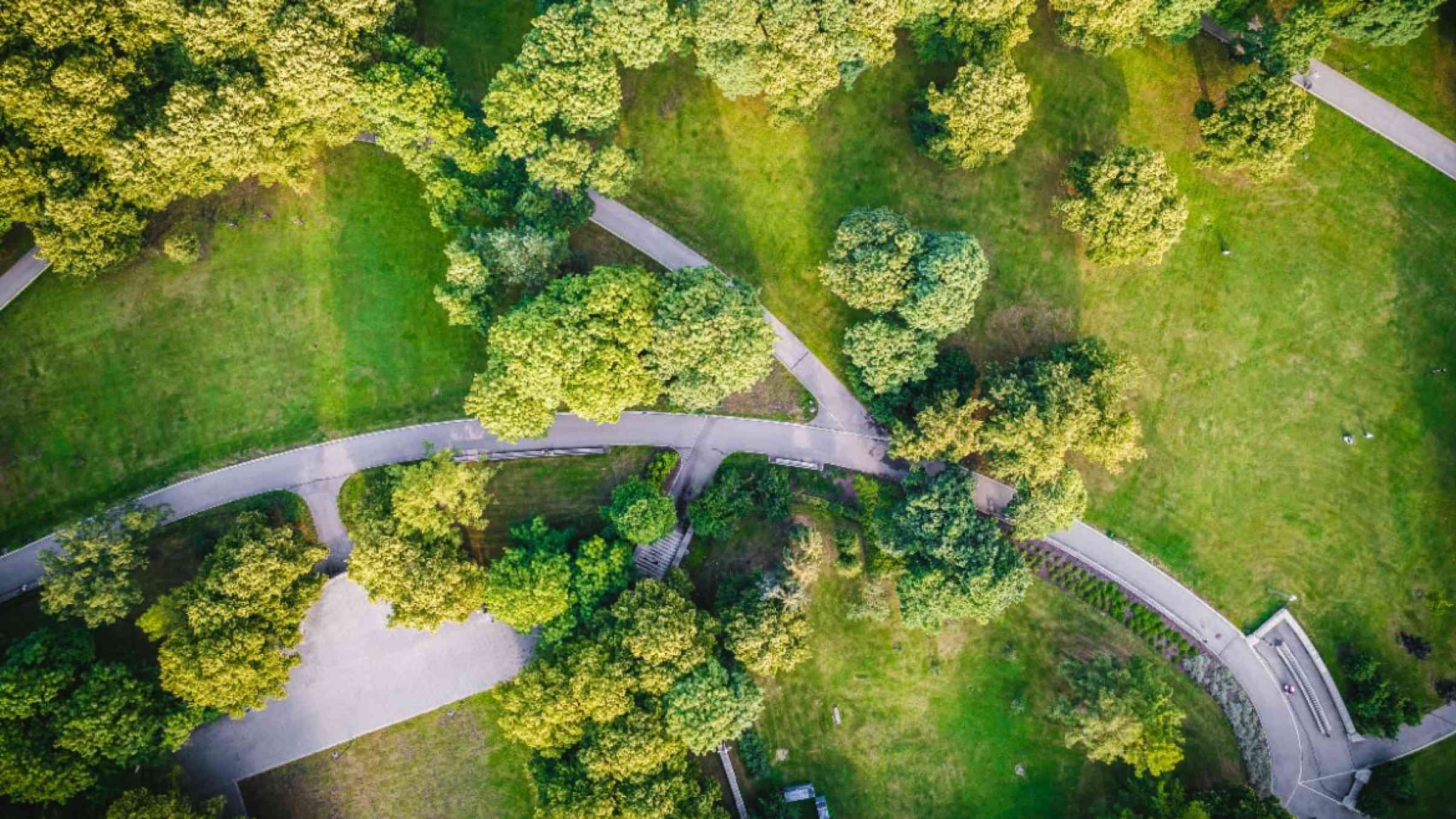The silent protectors: How trees may safeguard against disasters

It was a tree – more precisely an apple tree – that inspired Sir Isaac Newton to formulate a theory of gravitation by dropping its fruit on his head, according to popular legend.
Trees are inspiring in many other ways – including their capacity to provide resilience to a number of natural hazards.
Here are nine examples of Eureka! moments that inspired the PreventionWeb editors: they include urban cooling, barriers against storms and tsunamis, early warnings for volcanic eruptions, protection against wildfires, and more!
1. Broad-leaved trees offer local cooling
Broad-leaved trees could help to reduce some of the adverse local impacts of climate change. In particular during hot temperature extremes, broad-leaved trees reduce land-surface temperatures in Europe more effectively than needle-leaved trees, according to a study led by ETH Zürich, WSL and MeteoSwiss.
2. Diverse forests are best at standing up to storms
“A new study by researchers at the French National Research Institute for Agriculture, Food and Environment (INRAE) reveals that in Europe, the forests that are most resilient to storms are those with a greater diversity of tree species and dominated by slow growing species with high wood density, like oaks.”
3. Better predictions of wildfire spread may sit above the treetops
“In the lab, Koseff and Chung discovered that indeed, the length and overall size of a forest canopy strongly influences the behavior of fire plumes – the hot, turbulent air that rushes up and out from a flame and can launch embers into flight.
Their research, published June 23 in the American Physical Society’s Physical Review Fluids, shows that a forest canopy creates its own wind currents and turbulence, and that wildfire behavior can shift depending on a canopy’s dimensions.”
4. Greener trees can provide early warning of volcanic awakening
“Greener plants can be used to foretell when a volcano is about to erupt, potentially providing a warning long before more conventional methods of volcano monitoring.
"Studying satellite images from Yellowstone national park in the US, taken between 1984 and 2022, they were able to show that plants became greener in the locations where volcanic activity was building (due to the extra carbon dioxide helping to boost plant growth), followed by browner when the volcanic activity peaked (due to sulphur dioxide and high temperatures killing the plants).”
5. Mangrove trees can act like a sentinel against tsunamis
“A study in the journal Science found that the cataclysmic 2004 Indian Ocean tsunami, which killed more than 227,000 people, caused less damage to areas with coastal forests like mangroves. More recent studies have similarly shown that mangroves provided protection for communities and structures during hurricane overland flow events.”
6. ‘Edible fire buffers’ could become a wildland firefighter’s best friend
“High-moisture fruit crops like bananas may become a firefighter’s strongest ally, at least in places that share the Mediterranean climate of California, as new research shows that planting buffers of high-moisture banana crops in wildland-urban interfaces can significantly slow the advance of wildfires.”
View a related video
7. Trees could prevent 30% of deaths caused by urban heat islands in Europe
“A new study conducted with data from 93 European cities estimates that one third of deaths attributable to heat islands could be avoided if trees covered 30% of urban space.
The study highlights the substantial benefits of planting more trees in cities, although the authors acknowledge that this can be challenging in some cities due to their design, and that tree planting should be combined with other interventions such as green roofs or other temperature-reducing alternatives.”
8. Bamboo walls could help Uganda hold back worsening floods
“The bamboo - increasingly widely used as a flood defense in Uganda - acts like a wall when grown, slowing water pouring from swollen rivers.”
Its roots also stabilize the soil and catch silt, helping keep the riverbanks from collapsing, Nestoli explained.
"Bamboo has spreading roots which hold the soil very firmly and can allow water to still pass through while controlling the speed and strength," the farmer said.
9. Forests can reduce their own bushfire risk, if they’re left alone
“So what did we find? As the understorey of red tingle forest ages and thins, the lower branches of taller plants “self-prune” – in other words, they shed dead leaves and twigs.
When this litter is on the ground, it begins to decay and poses a lower fire risk than if it were still suspended.
The lower branches of taller plants, once self-pruned, are then less likely to ignite as fuel. Instead, they act as “overstorey shelter” that reduces wind speed and fire severity. In this way, mature forests control fire rather than drive it.
Our study showed that, due to this calming effect, fires in mature red tingle forests could be extinguished by firefighters most of the time.”
Keep up with the latest findings on nature-based solutions
Stay tuned to PreventionWeb as our editors continue to collect the latest research and news about how trees and other natural resources contribute to disaster resilience.
You can find them right here: More PreventionWeb resources on nature-based solutions.